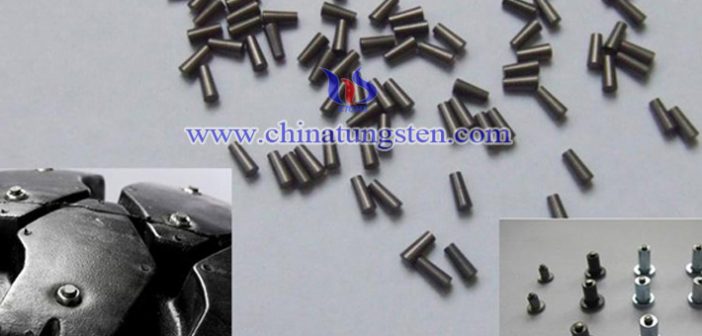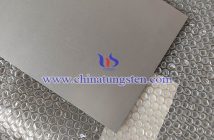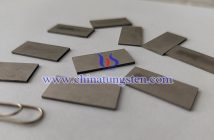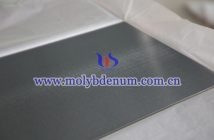Are you in the heat of the northern hemisphere? Still in a corner of the southern hemisphere? No matter how! When you turn around, you will always rotate again! Then, it should always meet the studs on the car tires. After all, the studs will always appear in cold and humid areas. Tungsten carbide studs are mainly embedded in car tires to prevent the car from slipping on wet skating surfaces and have a very broad market in many European countries.
The tire studs on the snowy road surface includes a flange on the cylindrical nail body at the head of the core, the wing portion at the middle portion, and the lower end portion, and the wing portion and the flange form an acute angle with the nail body. . When the stud is used, it is driven into the tire tread, which is not only easy to install, but also has an anti-shedding effect. Depending on the application and the groove type, the specifications have different requirements, but the material requirements are: wear resistance, low temperature resistance, high hardness and so on.
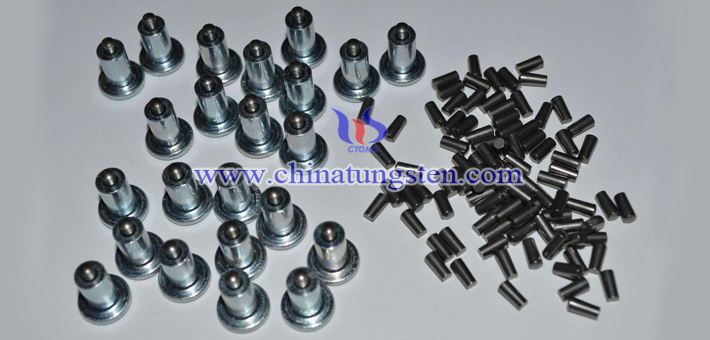
tungsten carbide studs picture
Compared with non-slip nails of other materials, the studs of hard alloy materials have many superior properties, such as high hardness and high wear resistance; low pressure on the ground surface, preventing car slip on the basis of ensuring minimum damage; installation and Easy to disassemble and reusable.
The holes in the car tires that are used to embed the tungsten carbide studs are easy to punch and can be easily removed without professional installation tools. In addition, the user can also install or disassemble the tungsten carbide studs according to different seasons. If it is not needed, it can be easily taken out and stored for the next reloading. When selecting the tungsten carbide studs for automobile tires, the user should first consider the thickness of the car tire itself and the depth of the hole.
In general, tungsten carbide studs for automotive tires are embedded in a steel sleeve or other material in the nail sleeve, and then the entire kit is inserted into the outer surface of the tire. In this way, the force area of ??the tire can be increased, and the tire of the automobile can be protected. When the vehicle is driving, under certain force, the hard alloy anti-skid nail for the automobile tire will be properly embedded in the ice surface. In order to enhance the grip of the automobile tire on the icy road surface, the slippage of the automobile is greatly reduced, and the accident rate is effectively reduced.
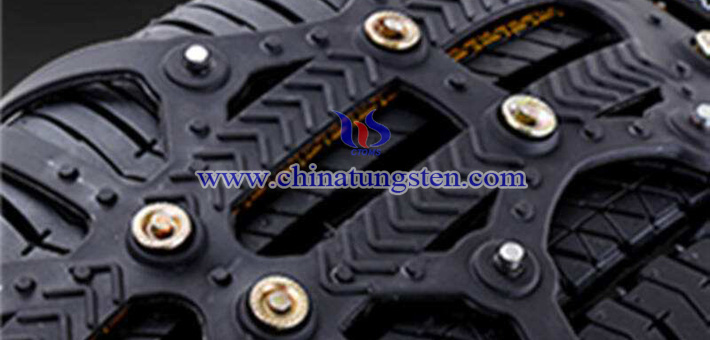
car tires picture
So, let's take a look at how the car's tungsten carbide studs are made? The preparation process of cemented carbide anti-skid nails can be divided into four basic stages:
1. Removal of forming agent and pre-burning stage
At this stage, the sintered body undergoes the following changes: the removal of the molding agent, and the formation of the forming agent gradually decomposes or vaporizes with the increase of temperature at the initial stage of sintering, thereby eliminating the sintered body, and at the same time, the molding agent is more or less added to the sintered body. Carbon, the amount of carbon added will vary with the type and amount of molding agent and the sintering process. The surface oxide of the powder is reduced. At the sintering temperature, hydrogen can reduce the oxides of cobalt and tungsten. If the molding agent is removed by vacuum and sintered, the carbon-oxygen reaction is not strong. The contact stress between the powder particles is gradually eliminated, the bonded metal powder begins to recover and recrystallize, surface diffusion begins to occur, and the strength of the compact is improved.
2. The solid phase sintering stage
At the temperature before the liquid phase appeared, in addition to the process that occurred in the previous stage, the solid phase reaction and diffusion were intensified, the plastic flow was enhanced, and the sintered body showed significant shrinkage.
3. The liquid phase sintering stage
When the sintered body exhibits a liquid phase, the shrinkage is quickly completed, followed by a crystallization transition to form the basic structure and structure of the alloy.
4. The cooling stage
At this stage, the microstructure and phase composition of tungsten steel vary with cooling conditions, and this feature can be utilized to heat treat tungsten steel to improve its physical and mechanical properties.
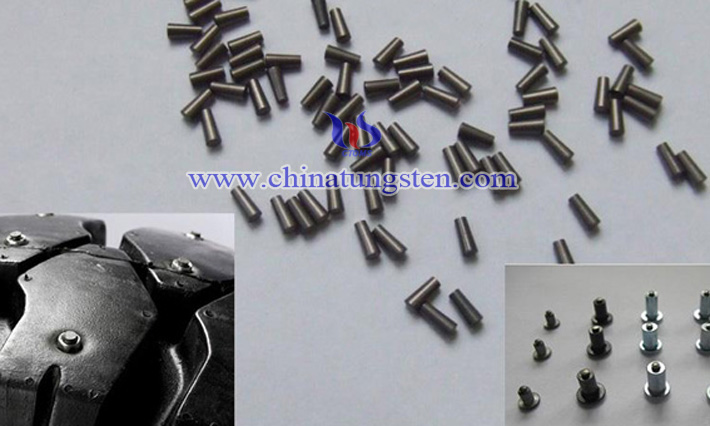
tungsten carbide studs picture
At this point, you should also know why the car tires use hard alloy anti-skid nails. The anti-slip nails are easy-to-consume products. Every day they grind and grind, they shrink. Although they can’t talk about the replacement, they always think. Once and for all, save trouble, tungsten carbide studs, as its name, hard enough, wear-resistant.

